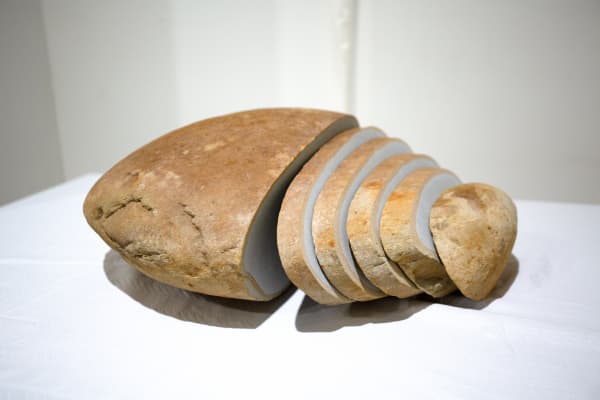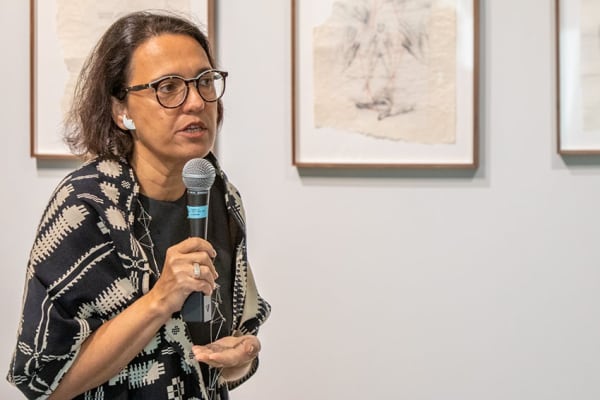Women at War: Curated by Monika Fabijanska
-
Fridman Gallery (NYC) and Voloshyn Gallery (Kyiv, Ukraine) are honored to present Women at War, curated by Monika Fabijanska. Women at War features works by Yevgenia Belorusets, Oksana Chepelyk, Olia Fedorova, Alena Grom, Zhanna Kadyrova, Alevtina Kakhidze, Dana Kavelina, Lesia Khomenko, Vlada Ralko, Anna Scherbyna, Kateryna Yermolaeva, and Alla Horska (1929–70).
Women at War features works by a selection of the leading contemporary women artists working in Ukraine, and provides a context for the current war, as represented in art across media. Several works in the exhibition were made after February 24, 2022, when Russia began full-scale invasion; others date from the eight years of war following the annexation of Crimea and the creation of separatist "republics" in Donbas in 2014.
War is central to history. History has been written (and painted) by men. This exhibition provides a platform for female narrators of history and examines the perception of war as gendered. Women are generally absent from the historical accounts of war, but violating a woman is seen as a violation of land and nation. Media images reinforce the perception of gender divide. But is war indeed gendered? Women comprise c. 25% of Ukrainian armed forces. Russian soldiers rape Ukrainian civilians of all genders, including adult men. Many artists in this exhibition struggle with the notion of victimhood and pose the question in what way women have agency during war.
The exhibition also serves as a gateway to Ukrainian and other Eastern European feminisms, which are significantly different from the Western mold. Finally, Women at War will contribute to a conversation about how national identity is tied to the perception of women's role in society. There are parallels between the fight for Ukraine's independence and the fight for its women's equality. They stem from the paradoxes of the Soviet Union, where early modernist, anti-nationalist, and feminist promises remained but a fig leaf of propaganda in the brutal and misogynist patriarchal empire it became.
Ukrainian art of the 2010s was largely focused on the discussion of whether Ukrainian identity should draw directly upon the short period of pre-Soviet independence or include the legacy of the Ukrainian SSR. This, in the country burdened with its colonial past, the unimaginable wounds of the 20th century (Holodomor, two world wars, the Holocaust), and the reality of a crisis, led to a national fixation on history. The young generation of artists focused their attention on historiography - how history is written, who writes it, who and what remains invisible. Soviet painting, especially the interpretations of WWII, came into focus of many artists. Others organized around the critique of decommunization - the destruction of Soviet monuments and mosaics in Donbas spearheaded by the post-Maidan government - and turned towards the forgotten pages of history. -
-
-
-
A vivid discussion about historiography among Ukrainian artists concerns historical painting. This critique is central to art practices of conceptual painters Lesia Khomenko (b. 1980 in Kyiv), whose Max in the Army - a monumental full-figure portrait of Khomenko's partner, an artist himself, joining Territorial Defense of Ukraine - was painted in March of 2022
-
-
-
-
Zhanna Kadyrova (b. 1981 in Brovary, Kyiv oblast) created Palianytsia (2022) in a village in Western Ukraine, where she evacuated from Kyiv. Large stones smoothed in local rivers reminded her of the typical Ukrainian bread, palianytsia. Because Russian occupiers cannot pronounce it properly, the word is now used to distinguish friend from enemy. Kateryna Yermolayeva (b. 1985 in Donetsk), cut-off from her family and home in Donbas, suffered an identity crisis. It led the artist to dress up as non-binary characters, and experiment with the idea of self as composed of multiple personalities (Photos, 2016-). In Olia Fedorova's (b. 1994 in Kharkiv) poetic take on Land Art titled Defense (2017), anti-tank hedgehogs are made of paper to symbolize the futility of the mind's attempt to escape the reality of war.
The exhibition features a drawing by Alla Horska (1929-70), on loan from the Ukrainian Museum in New York, situating this contemporary art exhibition within the context of Ukrainian feminist legacy. Both Horska - an artist and dissident - and poet Ivan Svitlichny (1929-92) whom she portrayed, fought to preserve Ukraine's culture and language under the communist regime. In 1970, at the age of 41, Horska was murdered by the KGB. Her name was adopted as a nom de guerre by one of the Guerrilla Girls. -
Events
-
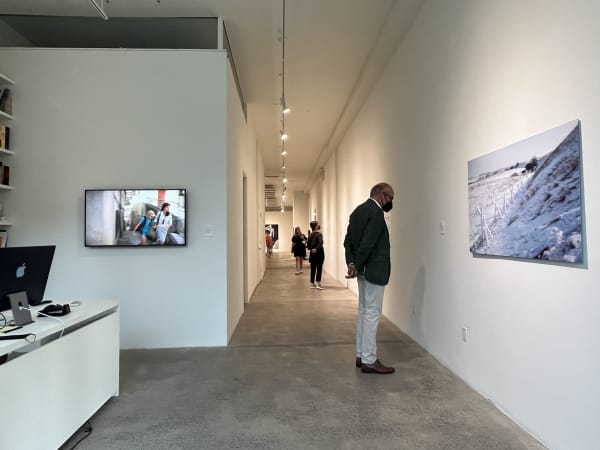
Curatorial Walkthrough with Monika Fabijanska
Women at War 7 Jul 2022 -
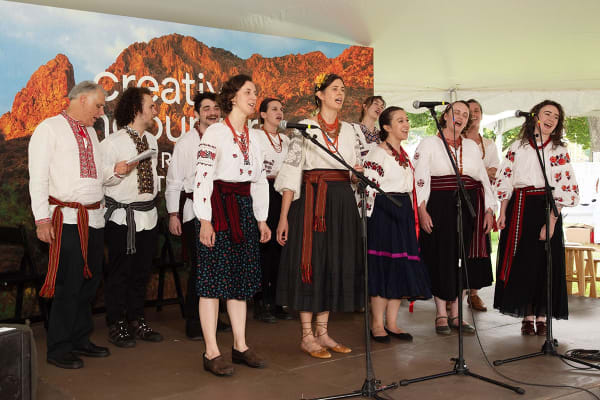
Opening Reception and Performance by Ukrainian Village Voices
Women at War 8 Jul 2022
-
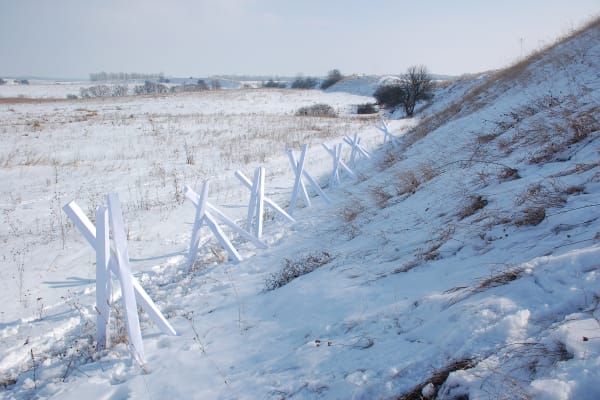
Artist Talk with Olia Fedorova and Dana Kavelina
Women at War 13 Jul 2022 -

Screening of Oleksandr Dovzhenko's silent film Zemlya (1930)
soundtrack by DakhaBrakha, co-presented with Locus29 20 Jul 2022
-
-
Press
-
About the Curator
-

-
Artist




















